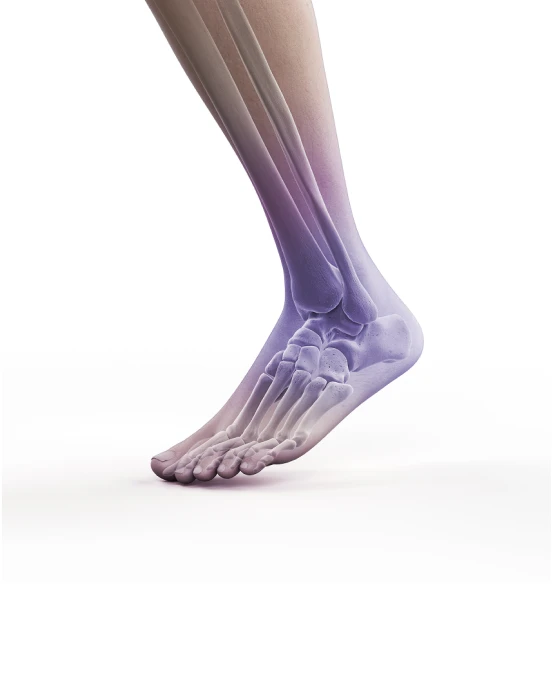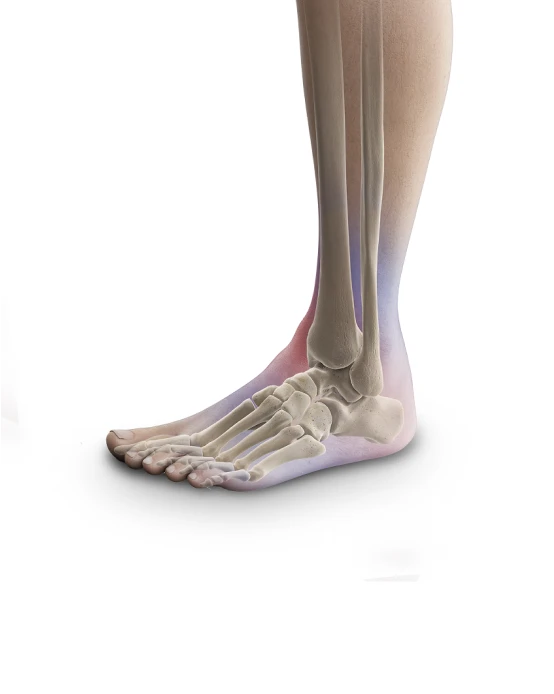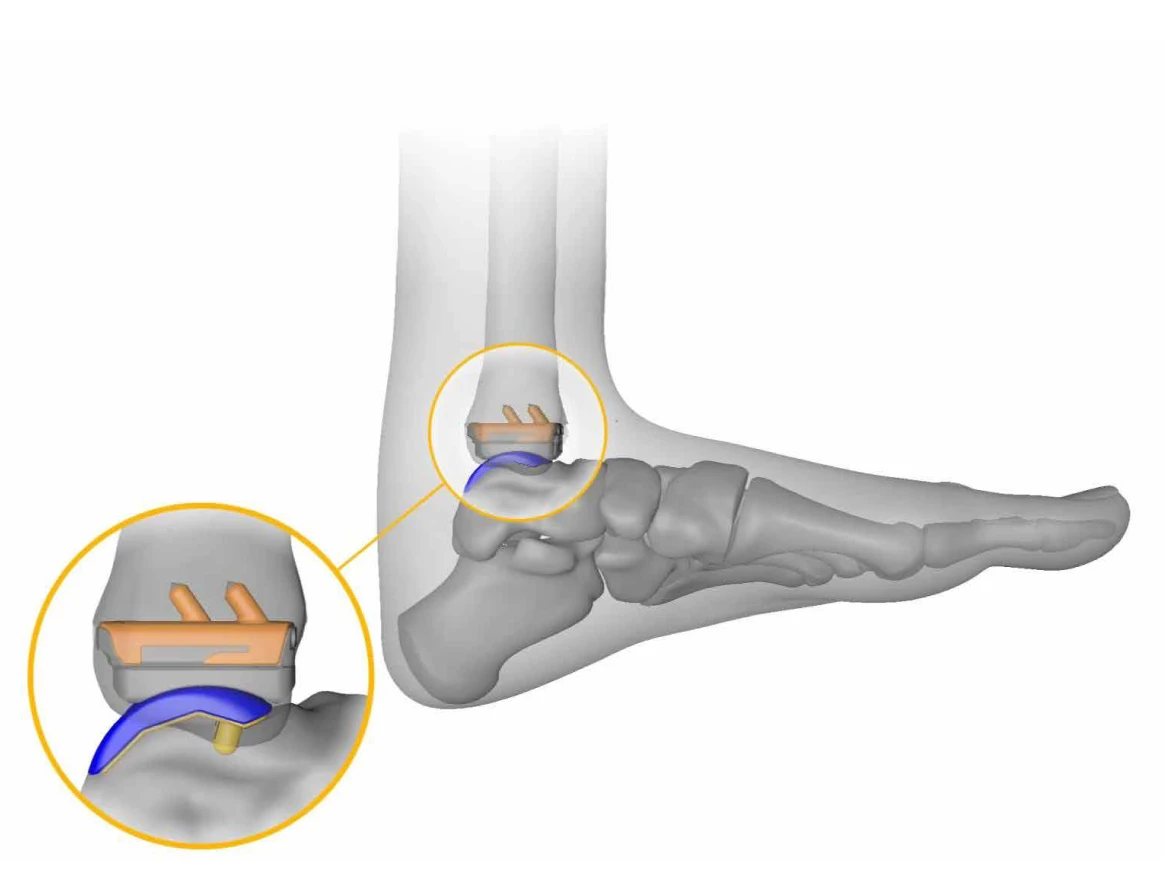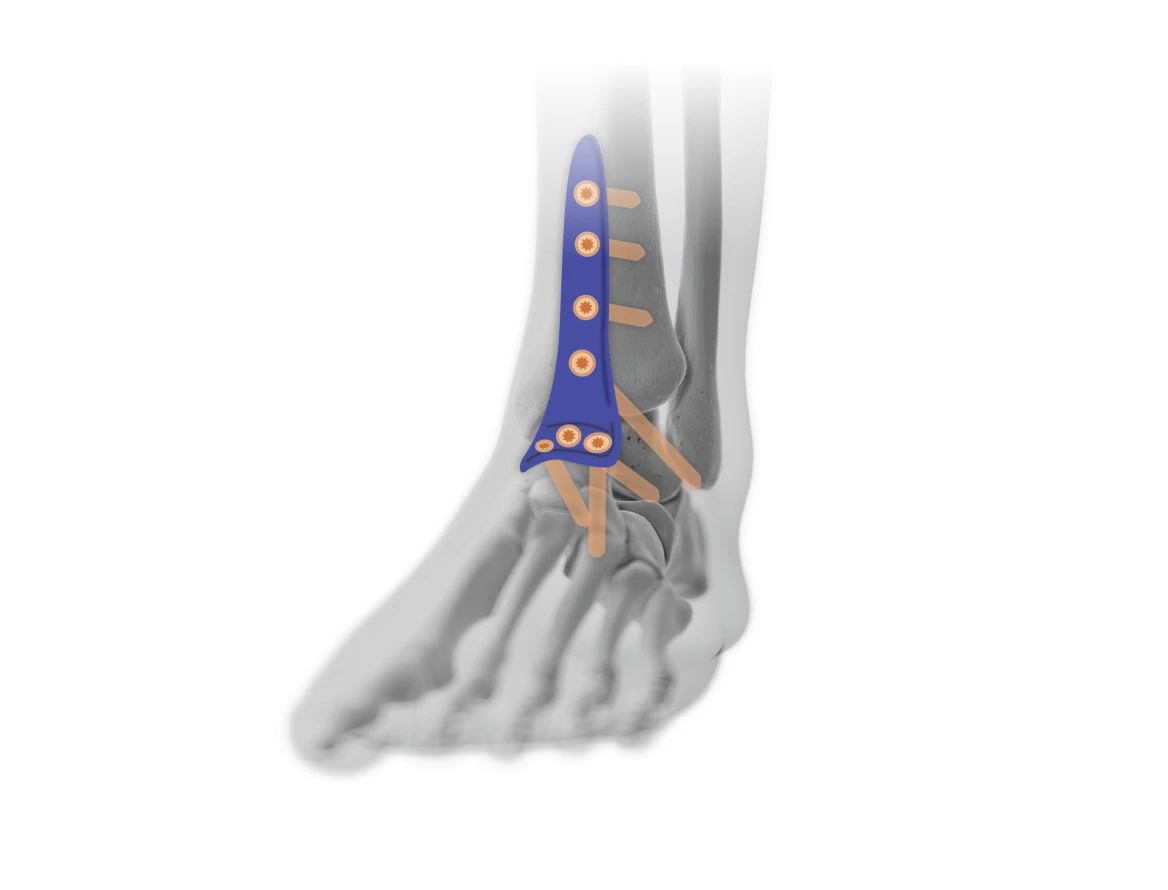Non-surgical options
In many cases, the symptoms of ankle arthritis can be treated without surgery.
Some options that can relieve pain and aid mobility, commonly used for less severe cases, are pain medication, shoe inserts, braces or injections.
Surgical Options
For less severe to moderately severe arthritis
Debridement, a procedure that removes bone spurs and loose pieces of cartilage, if these are causing the ankle pain.
Surgical Options
For End-stage Ankle Arthritis
Ankle Fusion
Ankle bones are fused together. Because the joints cannot move or bend, there is less pain.
Total Ankle Replacement
An artificial implant designed to allow the ankle to move and bend. Patient may get pain relief without sacrificing their movement.











